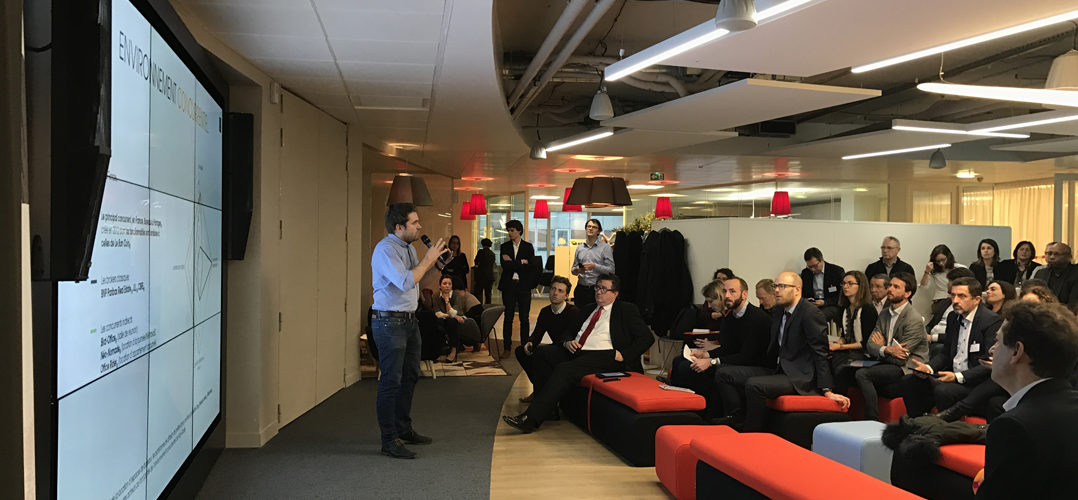New technologies are slowly reshaping our everyday lives. These changes have an important impact on how we purchase, consume, exchange, and use with goods, services, and data. These technologies transform the way we interact with the world.
No mere fad, the sum of these changes signifies a profound cultural revolution, a which not only implies but requires a profound shift in the way people interact with their environment.
Within the real estate sector, « Proptech » defines the new technologies and methods which are radically transforming the value chain.
Concepts like smart cities, smart buildings, big data, and user experience have shifted the balance of power; humans are being placed at the center of the conception process. Instead of exclusively utilitarian thinking, infrastructure is being designed with human well-being in mind.
- An evolving relationship with buildings
In the 80s, our industry was focused on ‘ease-of-use’ (not to be confused with simplicity). In the following decade, this thinking was cast aside to be replaced with more and more functions, each more cumbersome than the last; clutter became the norm, with devices having many more buttons than one knew what to do with.
Only in the 2000s did concept such as ergonomics and ‘user experience’ become common place within the real estate industry. In order to promote user adoption, new technologies were designed with comfort & simplicity in mind, and pioneers began designing technology in such a way that users intuitively understood the intended use.
Today, on the eve of a 4th industrial revolution, we are witness to a paradigm shift: Building as a service. In other words, a building with multiple purposes, evolving over time.
Individuals are becoming more connected to the buildings they inhabit, work in, travel to… New client expectations are putting into question the traditional methods and forcing the industry as a whole to reconsider their strategies.
In order to build the city of the future, not only must we understand the current environment, but be aware of long-term market trajectories and upcoming shifts. An innovation strategy is no longer a simple nice-to-have, but a corporate necessity.
- A beneficial change to a stagnant real estate sector
From site identification to occupancy, as well as transaction methods and financing, new innovative actors are appearing on the market. Not the large businesses of the past, but small, agile firms. Start-ups are turning the real estate market on its head, pushing market leaders to react. Through new business models, these new actors are transforming the value chain. Start-ups, by leveraging technology, are capable of growing at unprecedented rates: some firms attain global reach in mere years.
The Proptech phenomenon has forced many actors to take a step back and question the accepted methods on everything from conception, to construction, and maintenance of their assets.
With the surge of tools such BIM (Building Information Modeling), IoT (Internet of Things), and AI (Artificial Intelligence), the industry is suddenly capable of so much. Creating an exact digital copy of their buildings, working on these digital buildings synchronously with their partners, follow their sites from afar in live, to link to the energy consumption of a building to its current occupancy, track the maintenance and health of the asset, or even detect the emotional state of tenants… all in one click.
Beyond the technology being used, also underway is a general shift in innovation management. It’s becoming essential to involve or train more digitally inclined teams in real estate projects, in order to produce the above innovations, and to insure the ongoing relevance of the asset.
- Open Innovation as a strategy
Often times, first contact between start-ups and corporate groups takes the form of a cultural shock. Corporate groups often believe that true, lasting, innovation only comes from within the organization. Often-times this stems from bad past experiences, where external vendors where forced upon them in a top-down fashion, leaving no room for creativity or compromise.
On the other hand, external collaboration often has the benefit of a radically different point of view, a chance to escape from traditionally conservative methods and explore new market positions.
Today, it is easier than ever to externalize this innovative research and development with the help of dedicated innovation ecosystems.
An ecosystem approach enables a much more organic system, one of symbiotic instead of parasitic nature. It stems from a holistic methodology, an ongoing partnership which makes facing the uncertainty of innovation a bit less daunting.
Open innovation relies on the willingness for various, sometimes competing, partners to work together, in order to promote solutions to problems that affect the industry as a whole. As the challenges of innovation have been made clear, many firms have developed their own innovation teams, demonstrating their willingness to engage with the cultural shifts brought on by technology. This being said, for many, these teams have been given such a wide and heavy mandate, they often don’t know where to begin, what objectives to set, or even what solutions to seek.
It’s often easier for these innovation teams to turn to outside help, whether in the form of consultants or ecosystems as stated above, to help them better define their role and set achievable objectives.
- Start-up collaboration – and why it’s better to not go alone
Start-ups are simultaneously:
- developers and providers of innovative technology, enabling corporates to externalize the R&D activities, thereby reducing risk, and
- pioneers of disruptive business models.
This beneficial mix presents a significant opportunity for market leaders of the French real estate sector, who are being pressured by the market to evolve and challenge their existing structure.
For start-ups, the benefits are self-explanatory. Through relations with large firms, they are able to accelerate their growth and expand their market reach, all while finding an ideal product-market fit.
Although the benefits of start-up/corporate collaboration are obvious, establishing strong and durable partnerships between the two is not always obvious.
Certain fundamental differences make communication challenging, yet their collaboration is the foundation that will lead to the modernization of our cities.
To better understand each other, these counterparts need to be made to meet; not always an easy feat. They need to have opportunities to exchange notes, to challenge and be challenged and to learn from one another.
The intermediary holds an important role: through careful selection and understanding of both parties’ interests, they can attempt to reduce potential sources of friction, leading to a higher quantity of quality relationships.
Proptech start-ups have opened a Pandora’s box of possibilities for the real estate sector, and open innovation is a powerful way to answer not only the various challenges in working with external firms, but also to better involve internal stakeholders. The intermediary can be a strategic ally, acting as an innovation catalyst. They maintain a powerful network of innovative startups and help these young firms to better adapt their offer to match corporate needs. Ecosystems and collaboration can provide structure to the chaotic uncertainty that is innovation.



